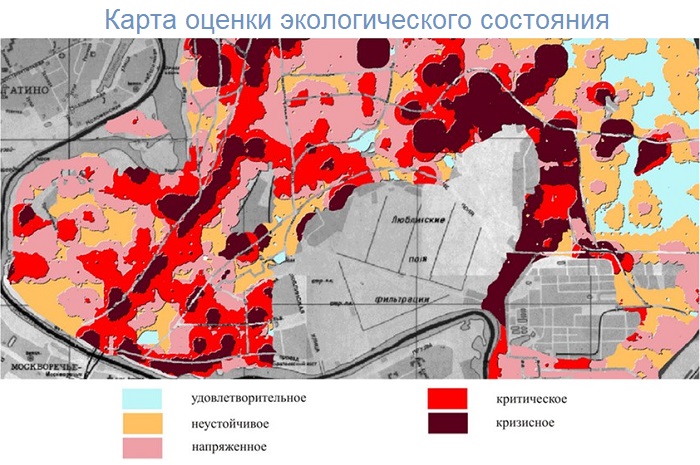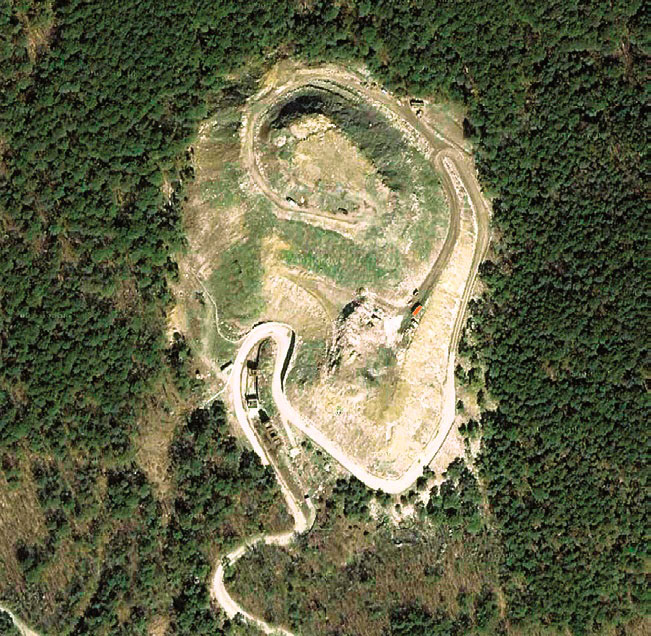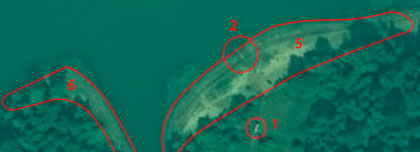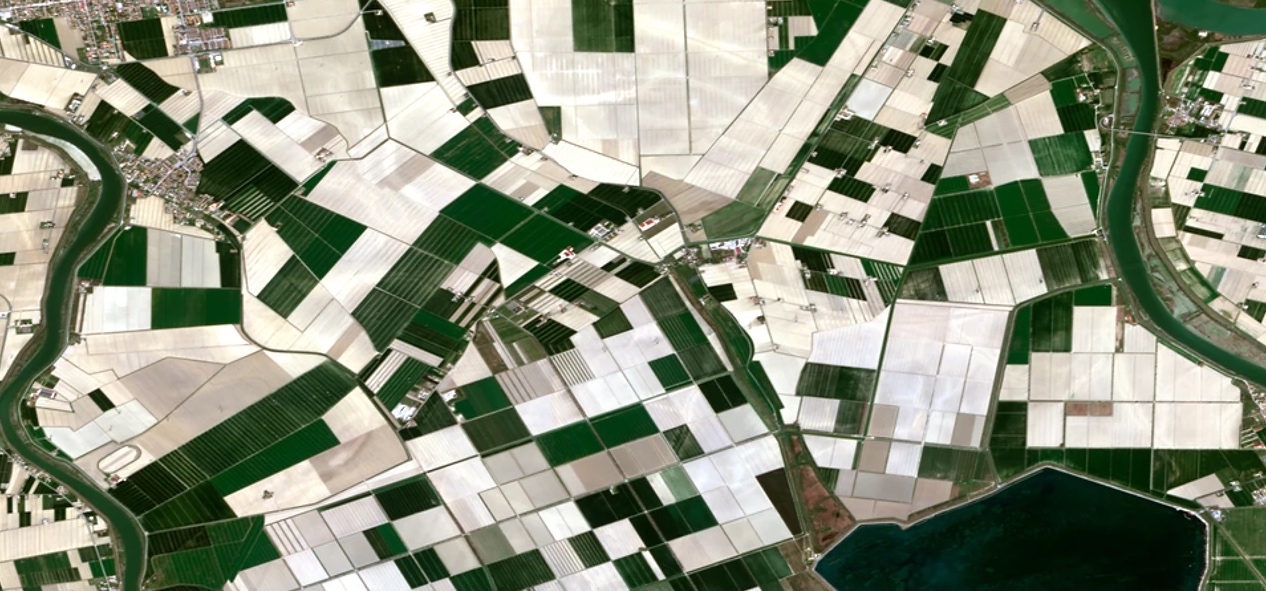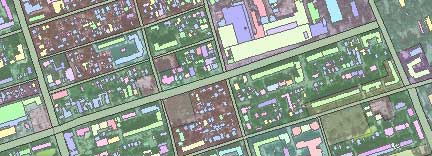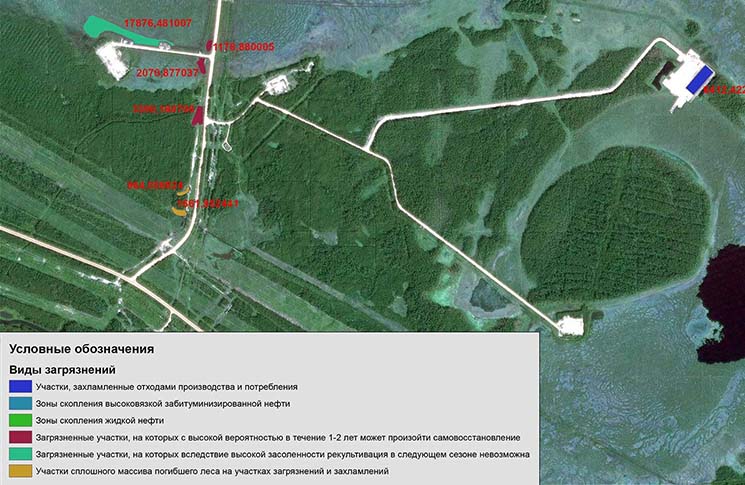Sat-Sun: Non-working days
Landfill Management for Municipal Solid Waste
Modern municipal management includes a comprehensive set of activities for collection, recycling, disposal, and burial of solid waste. Waste management actions involve waste sorting, recycling, composting, incineration, and deep conversion processes, all aimed at reducing the amount of waste destined for landfills.
There are very few waste processing plants in Russia. Mostly, municipal solid waste (MSW) ends up being buried, either in sanitary landfills or, worse, in open dumps.
MSW landfills are equipped facilities, typically located in specially designed excavations, pits, or quarries where household waste is stored. Waste brought to landfills by trucks is evenly distributed over the surface, compacted, and covered with layers of clay, marl, or sand. The landfill is divided into sections (cells) for operational purposes. One section is used, then covered with a layer of sandy-clay material, and waste is deposited in the next section, and so on. Over time, the bottom of the excavation fills up, but according to our norms, landfill operations do not stop. As a result, a real mountain of garbage grows.
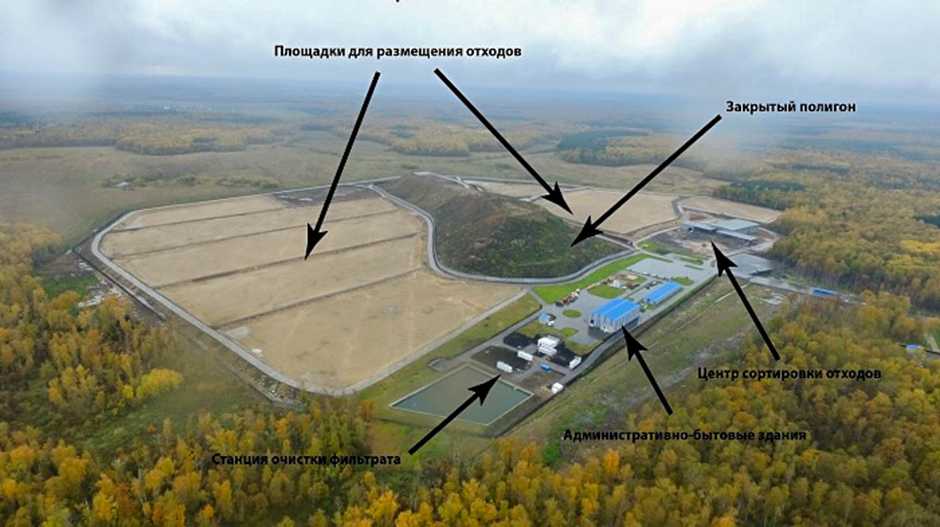
Fig. 1. 'Malinki' MSW landfill with 6,500,000 tons of municipal solid waste
MSW landfills are critical components in managing and mitigating the environmental impact of industrial activities. However, monitoring these areas can be challenging due to remote locations and limited accessibility. Recently, space-based methods have been employed to overcome these limitations and provide more accurate and efficient monitoring of MSW landfills. In this article, we will explore how space-based methods can aid in monitoring MSW landfills and discuss the advantages and limitations of using these techniques.
Methods for Evaluating MSW Landfills Using Aerospace Methods
Aerospace methods involve analyzing data collected from space sensors, such as satellites or aircraft, to monitor various aspects of the environment. These methods offer several advantages over traditional ground-based monitoring methods, including greater coverage, higher spatial resolution, and cost reduction. For example, by applying machine learning algorithms to satellite images, researchers can accurately detect changes in land use patterns, vegetation status, and soil moisture.
Despite the significant opportunities for improving MSW landfill monitoring, aerospace methods also have their limitations that need to be addressed. One of the main challenges is cloud cover, which can hinder reliable data collection at certain times of the year or in specific locations. Additionally, the cost of acquiring and processing satellite images can still be prohibitively high for many organizations, especially with limited budgets. Finally, interpreting the results of complex algorithms requires specialized knowledge that may not always be available within an organization. The following section will discuss the most popular and effective methods of aerospace monitoring.

Fig. 2. Locations of test sites. (Left): Landfills New Faisalabad and Main Faisalabad located in Pakistan; (Right): Landfills Tsagaan Davaa, Morangiin Davaa, and Narangiin Enger located in Mongolia.
Advantages of Using Aerospace Methods in MSW Landfill Monitoring:
- Ability to obtain accurate information on environmental conditions in real-time.
- High measurement accuracy due to the use of satellite data.
- Ability to analyze data in real-time and respond promptly to changes in the ecological situation.
- Great potential for scientific research.
Disadvantages of Methods:
- High cost of conducting monitoring using aerospace methods.
- Need for specialized equipment to process data obtained from aerospace methods.
- Limitations on the availability of data obtained from aerospace methods due to information dissemination restrictions.
Analysis Based on Vegetation Indices
The Tsagaan-Davaa landfill in Mongolia is located. Changes in vegetation cover in the southern part of the landfill can be observed from 2020 to 2021, as shown on the left in Figure 3. Despite cloud cover, changes were still noticeable. As can be found in the literature, NDVI (the most well-known and used vegetation index for quantitative assessment of green vegetation by measuring plant health based on the reflected light of plants at specific frequencies) is a well-established index that is also often used in landfill detection, as it can relate vegetation stress to potential pollution caused by waste. NDVI was applied to this site, which is shown in the right part of the image before and after the event. The index clearly highlights the area of interest both in 2020 and 2021, reporting a lower value at the landfill than in adjacent areas. This event is also vividly illustrated by the NDVI index, which increased in 2021 when changes occurred. To quantitatively assess the increase in NDVI values, average values over the area where land cover changes occurred (black dashed polygons in Fig. 3) were calculated before and after the aforementioned event, and values are presented in Table 2. The results show an increase in NDVI values, which was expected due to waste removal and resulting changes in land cover, as evidenced by visual interpretation of Google Earth images.

Fig. 3. Tsagaan Davaa landfill. (Left): terrain image in Google Earth; (Right): NDVI map. Red line: landfill perimeter, black dashed line: area affected by vegetation change.
NDWI (a vegetation index complementary to NDVI, sensitive to changes in water content in vegetation) was analyzed for the Morangiin-Davaa landfill in Mongolia, as shown in Figure 4 on the left. NDWI was used because soil water content can be related to leachate formed from waste. On this site, there was an expansion of the landfill in the southern part during the period from 2018 to 2019. As expected, an increase in NDWI values is noted for the southern part of the site.

Fig. 4. Morangiin Davaa landfill. (Left): terrain survey using Google Earth; (Right): NDWI map. Red line: landfill perimeter, black dashed line: area affected by waste removal.
Furthermore, the aforementioned increase in NDWI can be observed not only in the illustration (Fig. 4) but also by calculating average values over the landfill area associated with the event (Table 3), allowing for the potential presence of leachates at the site, especially in the area affected by new waste disposal (in the southern region).
At the Narangiin-Enger landfill in Mongolia, changes in land cover in the southern part of the landfill occurred from 2020 to 2021, as shown on the left in Figure 5. DDI was developed specifically for landfill detection, and an example of its application is shown for this object. Changes in vegetation cover are clearly detected, as evidenced by the decrease in DDI values in this specific site section. Also, in this case, average values for the southern part of the site (black dashed polygon in Fig. 4) were calculated before and after changes in land cover (Table 4), confirming the expected trend.

Fig. 5. Narangiin Enger landfill. (Left): terrain survey using Google Earth; (Right): DDI map. Red line: landfill perimeter, black dashed line: area affected by vegetation change.
Analysis Based on Land Surface Temperature
LST (Land surface temperature) is a key parameter that can be obtained from remote sensing data. The proposed land surface temperature assessment algorithm consists of obtaining atmosphere-corrected spectral radiance for one Landsat thermal band. LST was calculated for the Main Faisalabad landfill in Pakistan (see Fig. 6). It was found that there were no obvious changes in the distribution of land surface temperature on images for the two years under consideration, and overall, the landfill shape LST effectively distinguished the perimeter of the landfill from the surrounding area. It should be noted that LST values in 2021 were higher than those registered in the same period in 2020 for the same scene, but it is important to emphasize that the spatial distribution of LST values proportionally persisted in images. As mentioned earlier, since there were no obvious changes during the period from 2020 to 2021, average values were calculated over the entire landfill area to study the possibility of determining the perimeter of the landfill using temperature information. To account for this effect, the total temperature shift between the two images was calculated, considering only the area outside the landfill, resulting in a shift value of 5.9 °C. As already mentioned, it is important to focus on the difference between the temperature of the site and the temperature of the surrounding area. The results shown in Table 1 suggest a temperature gap of approximately 5 °C, which persisted over time.

Fig. 6. Main Faisalabad landfill. (Left): terrain survey using Google Earth; (Center): LST map in 2020; (Right): LST map in 2021. Red line: landfill perimeter.
|
Index |
2020 |
2021 |
|
LST IN (°C) |
38.319 |
42.943 |
Conclusion
MSW landfills require regular monitoring to assess their environmental impact and ensure compliance with regulations. Aerospace methods provide a powerful tool for this purpose, offering advantages such as broad coverage, high spatial resolution, and the ability to monitor changes over time. This study demonstrated the effectiveness of using aerospace methods for evaluating MSW landfills through case studies from Pakistan and Mongolia. Different remote sensing techniques, including vegetation indices (NDVI, NDWI, and DDI) and land surface temperature (LST) analysis, were applied to monitor landfill dynamics and environmental conditions. The results highlighted changes in vegetation cover and surface temperature that can indicate landfill expansion, waste disposal activities, or environmental impact.
While aerospace methods offer significant benefits, they also present challenges such as data interpretation complexity, high costs, and limitations due to cloud cover. Overcoming these challenges requires advanced remote sensing techniques, data processing algorithms, and collaboration between researchers, government agencies, and industry stakeholders. Future research should focus on refining these methods, integrating multi-source data, and developing automated monitoring systems to enhance the sustainability and efficiency of MSW landfill management.
References:
- RSA Online Publishing, 5.2. (RSR) and Journal of Construction Management, p.40, 5.4. Online Publishing Ltd.
- Rodriguez, P. and F. de Ávila, 2005. Remote Sensing and Imaging-based methods of optical imaging, p.50-50.5, and applications, p.2008-2012.
- Tayyebi, A. (2014), R. de l'Organisation de la publication de livres. 2003. (2014), p. 6.
- Kainz, W. (2014) and M. Zhang, P.J. (2011). Recent Advances in Field Remote Sensing for Environmental Systems, Geophysical Research Letters, 34(3): 585–587.
You can order from us
Detection of spontaneous, unauthorized garbage dumps
As already noted, near cities and villages, dacha and resort settlements, industrial and agricultural enterprises, there are dozens of spontaneous dumps where household, construction waste, and sometimes industrial waste are disposed of. Low culture of waste management, overloaded official landfills, impunity of organizers of illegal waste disposal are reasons for the emergence of illegal, unauthorized dumps. Their sizes, as shown by illustrations, can be quite significant.

Fig. 12. Unauthorized dump near the city of Borisoglebsk, discovered by Rospotrebnadzor. The photo shows how perpetrators bury it with earth using construction equipment.
Identification and elimination of spontaneous dumps, land reclamation, and cleaning of forest lands and riverbeds in their place, identification of those responsible for violating environmental legislation are important tasks for local executive authorities, environmental, and land inspections.
The main decryption properties of satellite images:
- mainly materials with high reflectance coefficients contained in dumps give a sharp increase in brightness in images - white, light yellow, light blue shades. Exceptions are less reflective agricultural, forestry, and some types of industrial dumps;
- dump contours are characterized by irregular shape, usually elongated along linear objects - highways, railways, slopes of river valleys, lake shores, and swamps;
- the most important characteristic displayed in high-resolution images (from 60 cm to 1 meter) is fine-grained texture formed due to surface irregularities of dumps, composed of various objects. A somewhat larger texture is characteristic of industrial and agricultural dumps.
These decryption features allow visually identifying and mapping dumps with a very high probability (up to 90–95%) based on high-resolution images. Additionally, developing a methodology for automatic decryption of dumps considering brightness characteristics of the image using texture analysis is possible. This task requires developing automatic decryption technologies based on ENVI software. To simplify and expedite the search for dumps, as well as increase the accuracy of their detection from the image, it is necessary during decryption to use knowledge about their possible location relative to other anthropogenic and natural objects.
The following regularities are observed in the placement of main types of dumps:
- construction, industrial, agricultural dumps and drains are mostly located in peripheral parts of the territories of corresponding enterprises, and such dumps can be located both within the boundaries of the enterprise and in close proximity, and in some cases at a considerable distance from enterprises. In such cases, the dump is often tied to one of the roads leading away from the enterprise;
- forestry dumps are located within fresh clearcuts;
- municipal household dumps and drains are mainly located in peripheral parts of settlements, dacha and garage areas, places with sparse development, vacant lots, ditches. In the case of remote location of the dump, they are also usually tied to the road network, often located along railways;
- recreational dumps are associated with places of unorganized recreation.
There is also a natural affinity for dumps: they are often located on slopes of river valleys, along lake and swamp shores, fill ravines and gullies, and sometimes valleys of small rivers, located on forest edges (Fig. 10). Dumps located in the forest are difficult to identify even from satellite images. To detect them, shooting should be done early in spring or late autumn when there is no foliage on trees and the crowns of trees are sparse. It is impossible to identify dumps under dense coniferous forests using satellite images.
Using all the above regularities allows decryptors to conduct a more effective and confident search for spontaneous dumps and drains, and in automatic processing, exclude from the search zone places where their location is clearly impossible.
Based on this, requirements for satellite imagery decryption (SID) can be formulated, compliance with which is necessary for clear identification of unauthorized solid waste disposal locations from images:
- when performing satellite imaging, a buffer zone around the settlement or economic object (5–25 km) must be defined in each case, within which the highest concentration of dumps is expected, and this territory must also be covered by the imaging;
- high spatial resolution imaging is required - not less than 1 meter; this pixel resolution on the ground allows decrypting clusters of solid waste with the highest degree of probability;
- multi-zone imaging is mandatory for obtaining color images and using the infrared channel (to detect drains);
- imaging must be repeated no less than once a year. For repeat imaging, in some cases, high-resolution images can be replaced with medium-resolution data (not less than 4 meters on the ground).
The result of image processing should be a full-fledged geographic information system (GIS) including thematic layers on the condition of dumps with all necessary attribute information.
Satellite images with a resolution of 1 meter or less (JL1KF01 A/B/C, SuperView, WorldView-2/3) provide a reliable basis for detecting and mapping such objects.
Environmental Impact on Landfills (Reverse Action)
Landfills are subject to the influence of natural and anthropogenic factors. The emphasis is on anthropogenic (more precisely, technogenic) factors, specifically on the landfill design factor: location, engineering preparation, and territory protection.
The condition of a landfill is characterized by a multitude of integrated parameters: integrity, fire resistance, filtration, etc. For example, integrity is determined by the landfill's ability not to disperse under the influence of thawing and rainwater. The better the landfill design requirements are met, the more durable its condition (Fig. 13). Filtration depends on the quality of designing base screens. However, fire resistance depends more on compliance with operational requirements.


Fig. 13. Photos of 4 stages of remote sensing before and after landslide at a solid waste landfill in Shenzhen
When designing landfills, the hydrogeological condition of the area is mainly considered, while the parameters of the landfill also depend on its component composition. In order to reduce the environmental impact on landfills, algorithms should be developed to detect violations when various design, operation, and reclamation requirements of landfills are not met, including requirements related to unauthorized dumps and littering.
Conclusions and Directions for Further Work
Due to rapid urbanization and the even faster increase in waste generation, effective waste management is crucial in modern society. Worldwide, and especially in low- and middle-income countries, a large portion of generated waste ends up in various types of landfills, which are not always equipped with proper systems for leachate and gas collection. Often, these are open or uncontrolled landfills, posing a real threat to environmental protection and public health. Identification and monitoring of these waste disposal systems are necessary to improve solid waste management. Remote sensing represents an effective method for landfill monitoring, overcoming the difficulties posed by on-site surveys that often consume significant time and resources. Currently, remote sensing platforms can carry a wide range of sensors with varying spatial and spectral resolutions capable of remotely monitoring Earth's surface and extracting valuable information for this specific purpose.
This article discussed various methods for monitoring solid waste landfills using satellite imagery. Research shows that Earth remote sensing data are powerful tools for detecting and analyzing landfill characteristics. They can detect changes in the landscape and determine waste density. Additionally, vegetation indices can assess the condition of vegetation cover on solid waste landfills and identify potential problem areas.
However, despite all the advantages of satellite monitoring, limitations of this approach should be noted. Weather conditions, cloud cover, and other atmospheric factors can affect the quality of the data obtained. Furthermore, the accuracy and detail of information depend on the resolution of the satellite system.
Future directions for work in satellite monitoring of solid waste landfills may include the following aspects:
- Development of new methods for analyzing data obtained from satellites to more accurately assess the environmental condition of landfills.
- Study of the impact of landfills on local fauna and flora, as well as the development of measures to preserve biodiversity in landfill areas.
- Development of monitoring systems that will automatically collect data on the environmental condition of landfills and transmit it in real time.
- Development of software products capable of processing large volumes of data obtained from satellites and providing users with information on the environmental condition of landfills in a convenient format.
- Collaboration between scientists and government representatives to address environmental pollution issues in solid waste landfills.
Overall, satellite monitoring of solid waste landfills represents a promising and effective tool for waste control and management. Continued development of these methods, improvement of technologies, and further integration of satellite data into decision-making processes will allow us to more effectively combat the solid waste problem and ensure sustainable use of the planet's resources.
Benefits of satellite monitoring of solid waste landfills:
- Determining the level of environmental pollution in landfills.
- Identifying high-risk areas for human and animal health.
- Determining the causes of diseases and developing measures to prevent them.
- Evaluating the effectiveness of measures for cleaning up and reclaiming landfills.
- Monitoring the condition of soil, vegetation, and water resources at landfills.
- Studying the impact of landfills on local fauna and flora and developing measures to preserve biodiversity in landfill areas.
- Developing monitoring systems that will automatically collect data on the environmental condition of landfills and transmit it in real time.
- Development of software products capable of processing large volumes of data obtained from satellites and providing users with information on the environmental condition of landfills in a convenient format.
Examples of the application of satellite monitoring of solid waste landfills:
In the territory of the Kronstadt district with an area of 1800 hectares, landfill detection was carried out on the basis of materials from aerial photography in 2007 and 2011. As a result of processing, 47 landfills were identified. The contours of the identified objects were plotted on GIS maps. The obtained material allowed assessing the dynamics of the area of existing landfills to develop proposals for the priority of their liquidation
In April 2022, numerous studies were conducted on the selection of suitable landfill sites for the city Faisalabad, the third largest city in Pakistan by population. The result of the study was a map showing the distribution of zones in the most suitable place for the construction of the landfill.


